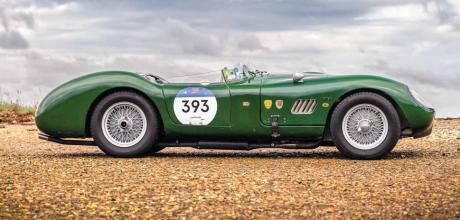1955 Tojeiro-MG by Corsica
This Tojeiro-MG, the final car to emerge from thefabled Corsica coachworks, covered only 34 milesbefore 2003. Finally it is being driven as intended.
HISTORY IN THE MAKING
1955 Tojeiro-MG by Corsica — Making history in Corsica's final creation
There is no more enigmatic company in English coachbuilding than Corsica. Its name conjures images of gnarled artisans bashing away at sheet steel in backstreet Bastia, wearing thick oilskin overalls and with a cigarette (roll-up for authenticity rather than lazy Gitanes cliché) hanging out of the mouth. The coachworks’ back catalogue supports such a vision with a scrapbook that includes some of Europe’s finest pre-war cars.
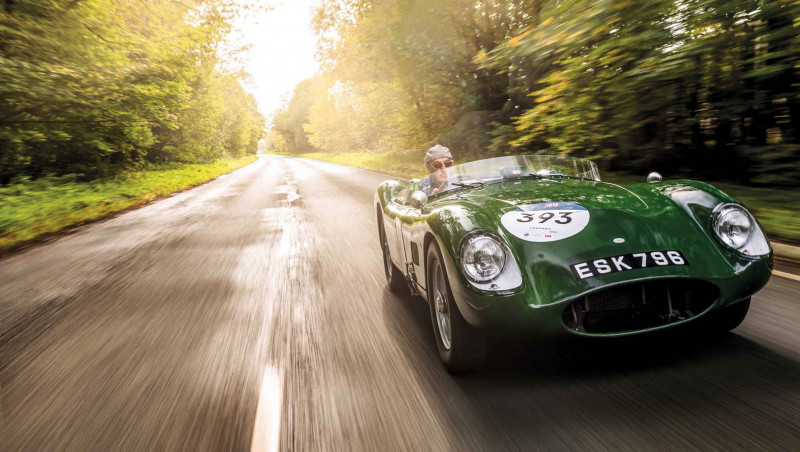
The fact that it was revered enough to be so in-demand at the very top end of the market yet remained wilfully unprolific (and, according to historian Nick Walker, never displayed its wares at major shows) only added to the mystique and the imperative to buy-in. Ironically, the current uber-luxury market mantra of bespoke, self-designed goods handcrafted by an extremely small team of highly skilled artisans (Corsica never had more than 20 staff) bringing the customer’s own vision to life would all have sat very well with Corsica.
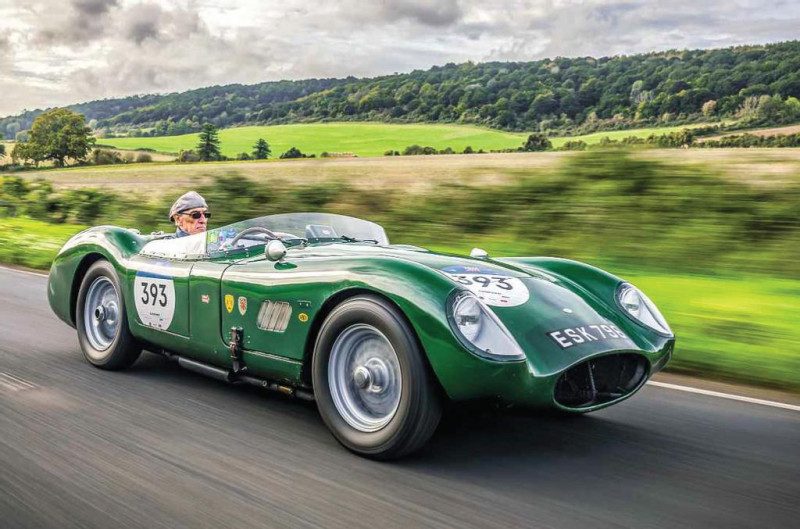
Yet, far from the sweltering Mediterranean sun, Corsica was simply named after the North London street where it started, a Highbury road wedged between the railway lines and the A1. Today, Corsica Street is the usual north London parade of yoga centres and vaguely Deco class-B premises converted into luxury warehouse-style flats, but back in 1920 it was a bustling road mixing light industry with residential property. That was when it was founded by Charles Stammers, along with his brothers-in-law Joseph and Robert Lee, plus trimmer Bert Wood, and the company’s name became exotic only when it moved – first to nearby Grimaldi Street and then more long-term just off The Broadway in Cricklewood. That was when its more humble origins became obscured.
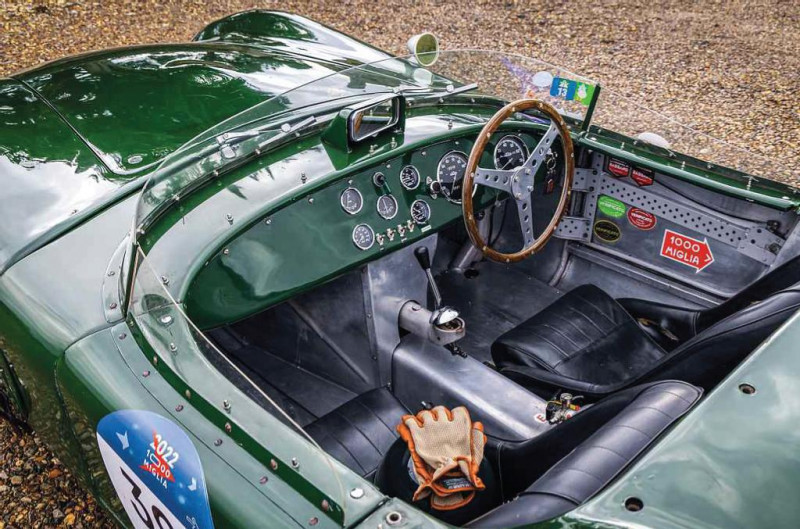
Corsica was unusual in other ways, too, making a virtue of the fact that it neither employed a full-time designer nor had aspirations to grow any bigger than a cottage industry. In fact, far from being fantastically expensive, by adopting a simple process of farming out much design and frame-building, and assembling in-house, Corsica was actually comparatively cheap. Certainly more so than suggested by the marques its usually sporting bodies are associated with.

Think Corsica and you are talking Squire, Rolls-Royce, Bentley, Donald Healey’s Alfa 8C-clone straight-eight Triumph Dolomite, Mercedes-Benz 500K and SSK, Daimler Double Six and Alfa Romeo’s own 6C and 8C. Even overlooking the more humdrum trade for the likes of Wolseley and Humber that kept the workforce busy, it is some roll call. Then there were the Bugatti Type 57s, of which the company is reckoned to have bodied somewhere between eight and 14. That’s quite a spread but, when you factor in both original coachwork and rebodying (for which Corsica was a go-to), both figures are plausible.
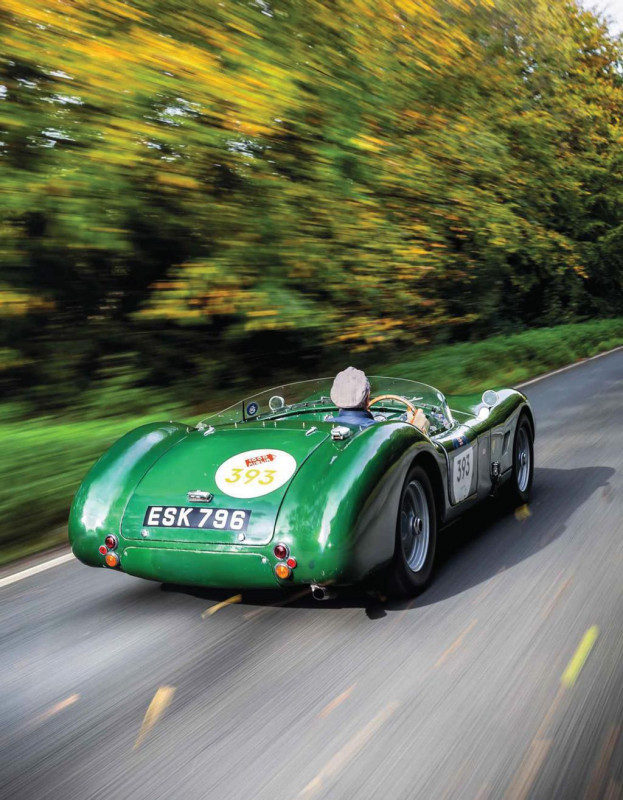
‘Far from the sweltering Mediterranean sun, Corsica was named after the North London street where it started’
Of course, Corsica never did anything to encourage the more romantic misconceptions about its roots, but neither did it try especially hard to dispel them. And such misapprehensions clearly did the small family business with the big international reputation no harm.
Until 1939, that is. As for so many businesses, World War Two was not kind to Corsica. Charles Stammers and Joseph Lee both lost their lives during the war, Bert Wood then sold the premises to Smiths Industries, and the remainder of the company dispersed, Robert Lee co-founding FLM Panelcraft in Putney (he was the L), which also employed one of Charles Stammers’ sons, Jack. The other son, similarly cast adrift by the closure of Corsica where both brothers worked, was Charles Jnr. Chas inherited some lock-ups in Ruvigny Gardens, Putney, and set up there post-war, initially (and then again much later, from 1978) with sibling Jack. He also tried to enlist former workmate Charlie Williams, though he ran off with Len Pritchard and the rest is history.

In 1991, Chas and Jack (then both of pensionable age) were still working together in Putney and were photographed for a magazine article with a svelte early-1950s sports car, heralded by the brothers as the last Corsica-bodied car and looking like a composite of some of the 1950s’ sexiest sports racers. There is more than a hint of C-type in the rear and you can see Maserati, Ferrari and Aston Martin in the lines, lamps and details such as the gills.
Not that there are any signs of its Corsica roots on the body because it is badged as a Tojeiro, a name almost as misleadingly exotic as Corsica in British motoring. John Tojeiro will obviously be best remembered for the Ferrari Barchetta-inspired car that morphed into the AC Ace and subsequently the Cobra, but the Portuguese-born wunderkind was behind a wealth of racing cars and off-the-shelf chassis, his own sleek Jaguar-based specials (though not all were devastatingly pretty) perhaps providing equal inspiration for Chas Stammers.
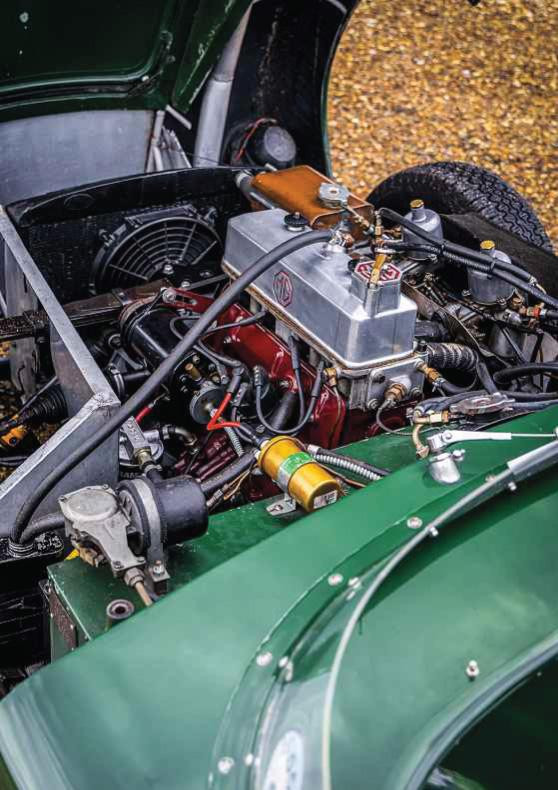
This 1955 Tojeiro had a tubular chassis – modified by Chas – and a 7ft 4in wheelbase and ran mainly MG mechanicals. Chas bought the chassis parts from John Tojeiro’s Tojeiro Automotive Developments (TAD) and it was allocated chassis number TAD1/55. Chas set to it and, according to Jack’s wife Jan, the majority of the work including the complete body and installing the engine was done in the mid-1950s. Yet when journalist Mike McCarthy visited in the early 1990s it was still not quite finished. Nor was it when Chas died in 1999, even though it was clearly ‘done’ enough to have gained an MoT in 1997. The Tojeiro then passed to Jack, who himself died just one year later, and the family eventually liberated it from a lock-up and put it up for auction with Coys at Chiswick House in 2003. It was MoT’d and had 34 miles on the clock. Yes, 34 miles!

Enter Steven Gardner. The solicitor has always had a thing for old cars, his first being a 1936 Austin 12/4 cabriolet with dickey seat, which he then trumped by running a fan-less Dellow trials car as a daily driver in London – ‘all my chums had TCs and I wanted something different. Eventually one of them boiled my poor Dellow to death’. A flurry of two-seater sports cars followed until he bought the second-to-last AC-engined Ace to leave the works in 1971, a car that he not only still owns, but which was joined in his stable in 1975 by an AC Aceca Bristol that he’d rescued out of the field where it had been sitting for 11 years.
A Corsica-bodied Tojeiro therefore seemed a natural complement to the AC pairing. ‘I was just sitting at my desk eating my lunch in 2003 when I received an email flyer for the auction, so I phoned instantly,’ says Gardner. ‘The sale was on a Saturday at Chiswick House and the night before we were having dinner with some friends near Stroud, so I had to drive past it on the A4 to get there. I had my six-month-old son plus my wife and her mother in the car, but I swerved off the A4 and dashed off to the viewing, shouting that I would be back in a minute. I had a quick look at the Tojeiro and carried on to Gloucestershire, but was already in love. I always adored the look of sports racing cars of the 1950s, the C- and D-types, Maserati 350S and Testa Rossa, so I thought this was a great-looking little machine.
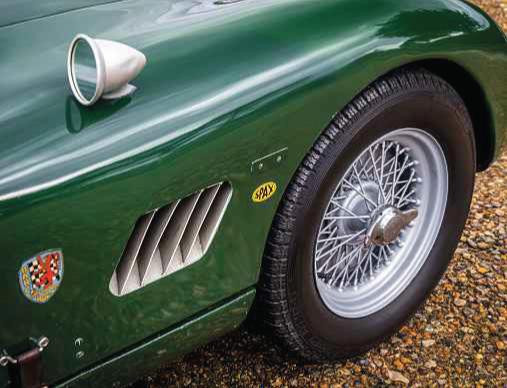
‘I got to my friend Austin Weltman’s – he and I had nearly bought a well-known Tojeiro together 30 years previously – and he said I had to get it and ordered me back to London first thing on Saturday. Tash, my wife, just said “You don’t have to tell me how much you’re going to bid for it, but promise me you’ll set a limit and won’t go above it’. I did set myself a limit, of £45k, and I think the gavel fell at £42,500… plus premium.’
Buyer’s remorse hit almost immediately – ‘I started thinking “What the hell have I done?” because I had done no research whatsoever’ – as did a concerted programme to make the Tojeiro not just road-legal but truly roadworthy, too. ‘It had done nothing but sit in a leaky lock-up for years. The engine ran on, it jumped out of gear. I spoke to Jan, Chas’s sister-in-law, and she told me it had been his pet project and no-one else had been allowed to touch it, yet he didn’t want to drive it for some reason. He had driven it as far as Richmond Park and to the MoT station once, but that was it, from 1955 to 2003!’ Those 34 miles…
There followed a frustrating two years while the Tojeiro was finished off. Alan Holdaway, who’d restored Gardner’s Aceca, did most of the work, but the MG TF engine on twin SUs went off for specialist attention elsewhere. That engine rebuild went horribly wrong, however, and the unit seized, so it was then sent to Gerry Brown (of Brown & Gammons fame) and was gone for two years. When it finally came back, however, the XPEG 1500 was close to race spec, with a 16lb lighter Laystall-Lucas high-compression aluminium head and a new Phoenix crank.
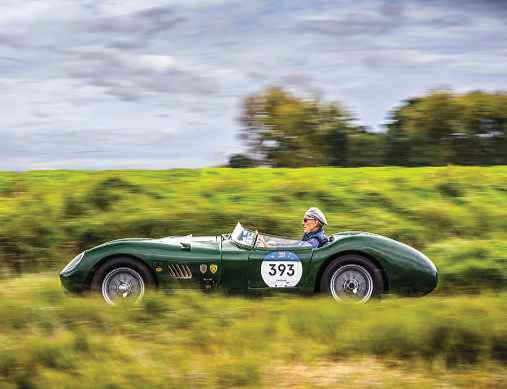
The gearbox also proved to be a ‘challenge’; the TD unit had been superseded by the must-have, stronger close-ratio TC ’box that all the racers use. Unfortunately, when it was built up, that gearbox turned out to have an appetite for thrust bearings until the fitment of a roller bearing eventually cured it.
Otherwise the Tojeiro is mechanically as it was built and as Gardner bought it from the Stammers family. That means unservoed Alfin drums at each wheel, rack-and-pinion steering, an ENV rear axle with transverse leaf spring, hydraulic dampers and lower wishbones, and the differential built into the A-frame.
Having finally got it usable and reliable, Gardner furiously started making up for lost time, taking part in endurance rallies and events all over Europe, and, availing of its decent boot space for luggage, (nearly) always driving the Tojeiro to and from those events. He ticked off the Vernasca Silver Flag, La Leggenda di Bassano, the Gaisberg Races at Salzburg and more, but in 2022 achieved his ultimate aim. ‘A pal talked me into doing the Mille Miglia, so we entered and got accepted. It was my last chance because I am 80 this year, plus I think we were the first ever Tojeiro to take part. It was an amazing experience, but far more arduous than I expected and the heat was crippling. The exhaust manifold is right over your legs and the rest of the exhaust is directly underneath you.’

It’s true that the Tojeiro is very efficient at generating its own heat, but on a winter’s day in Sussex rather than northern Italy in summer that is a blessing rather than a curse. A similar joy is sitting in the comfy, enveloping bucket seats admiring every inch of the riveted aluminium coachwork, hand-shaped by the eye (and eye alone) of one of the top names in British coachbuilding. Two fat (3in) chassis tubes (Chas Stammers had modified the chassis) pass through the footwells, momentarily distracting from the ocean of holes where every piece of excess metal has been drilled to the max. This latter detail includes the three floor-mounted pedals.
‘It’s sublime on smoother tarmac, and you can feel how beautifully poised this car would be on-track’
What I find fascinating is that the difference in build and appearance (door pulls, the lot) between a 1950s homebuilt sports racing special and a world-beating works entry is negligible. The same cannot be said of the sound. Instead of the sweet pea-shooter onslaught of Colombo’s V12 or the menacing, crackling bellow of the Jaguar, Aston and Maserati straight-sixes, a little MG four is burbling away eagerly and insistently through a single tailpipe, only hinting at the angry high-revs rasp to come.
That ally head is supposedly worth up to 20bhp and you can certainly feel it on the move, as the Tojeiro takes off briskly and accelerates smartly until you find yourself doing an easy 70mph at 3500rpm in third before taking the final cog and cruising. It is sweet and revvy throughout the power band and the gearbox is similarly efficient and capable. Ignoring a smidgen of layshaft noise, you find a straightforward H-pattern with synchro on all forward gears except first. You really don’t need to double-declutch, but sometimes it’s satisfying to synchronise your feet and your hand operating the big remote lever sprouting from under the dash and thereby feel fractionally more at one with the car.
The chunky steering wheel is very upright but the operation is extremely positive and direct, precise and never heavy, fingertip-light when you are at speed. It corners impressively flat and, while the hard ride is a pain on uneven and choppy roads – especially in something akin to a Lotus Seven for low-riding vulnerability – it is sublime on smoother tarmac. You can feel how beautifully poised this car would be on-track.
To verify that, we took multiple runs down the effortlessly sweeping B2141 between Chilgrove and Lavant in Sussex, and on that short but glorious stretch the Tojeiro really hit its sweetspot. The bullet wingmirrors are vestigial, of course, but the shrouded Lucas item on the dash and a working neck are all you need for perfect all-round visibility.
Indeed, all that would prevent you driving this car huge distances with a big smile on your face is the low 6in aeroscreen that channelled a barrage of air, insects and grit onto the forehead of someone even as short as me. The way to protect yourself is to wear a flat cap back-to-front. Probably good for aerodynamics, too. I am not sure I am made of stern enough stuff, but Gardner is. Ah, Gardner. To revisit a point made earlier, between 1955 and 2003 this car accrued just 34 miles and no active history. It now boasts 18,000 largely competition miles and he still has plenty more planned for it. ‘I am giving it its history now,’ he says. ‘That’s fine, it deserves it and it’s about time.’
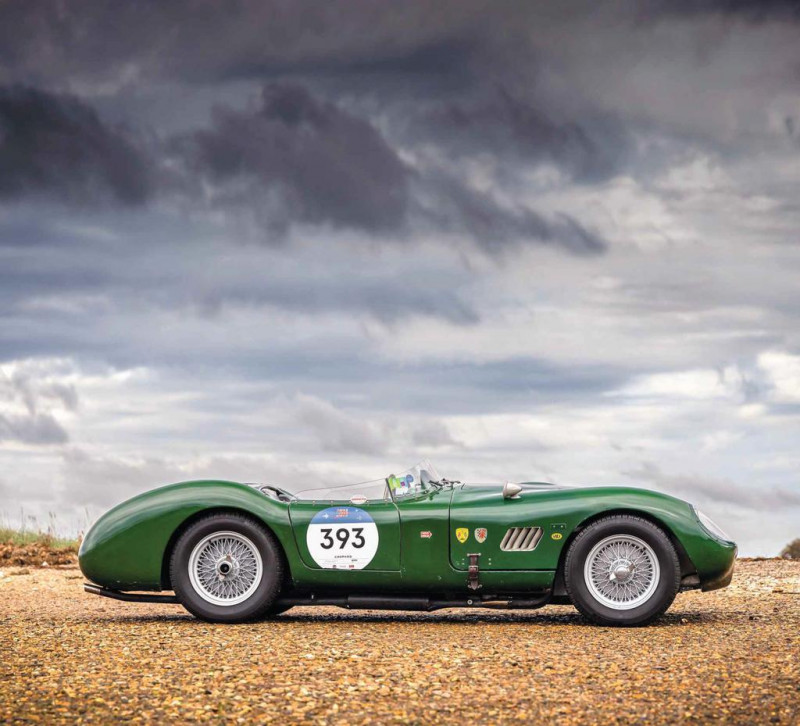
Clockwise, from top rightCockpit deceptively comfy for Continental cruising; styling is a smorgasbord of '50s sports- racing icons; sweet engine rebuilt by the late Gerry Brown; this Tojeiro loves sweepers.
Clockwise, from left Although there are influences from all manner of cars, that tail looks all C-type… with maybe a dash of Austin-Healey; it has the racers' favourite TC box; you sit Lotus 7 low on the road.
From top Large gills are rather more functional than the wingtop bullet mirrors; ideal proportions show coachbuilder's art; pedals, like much else, heavily drilled.


